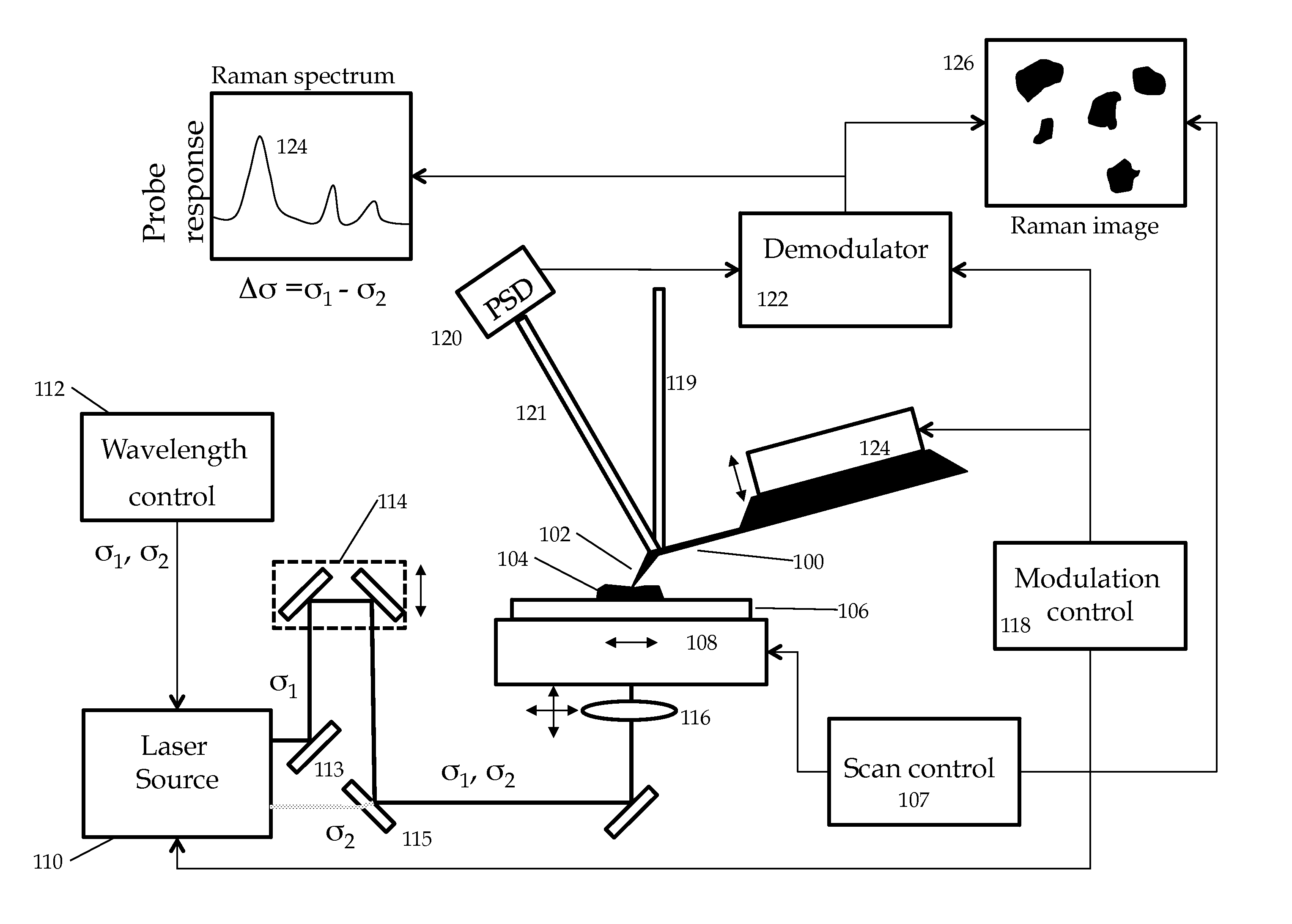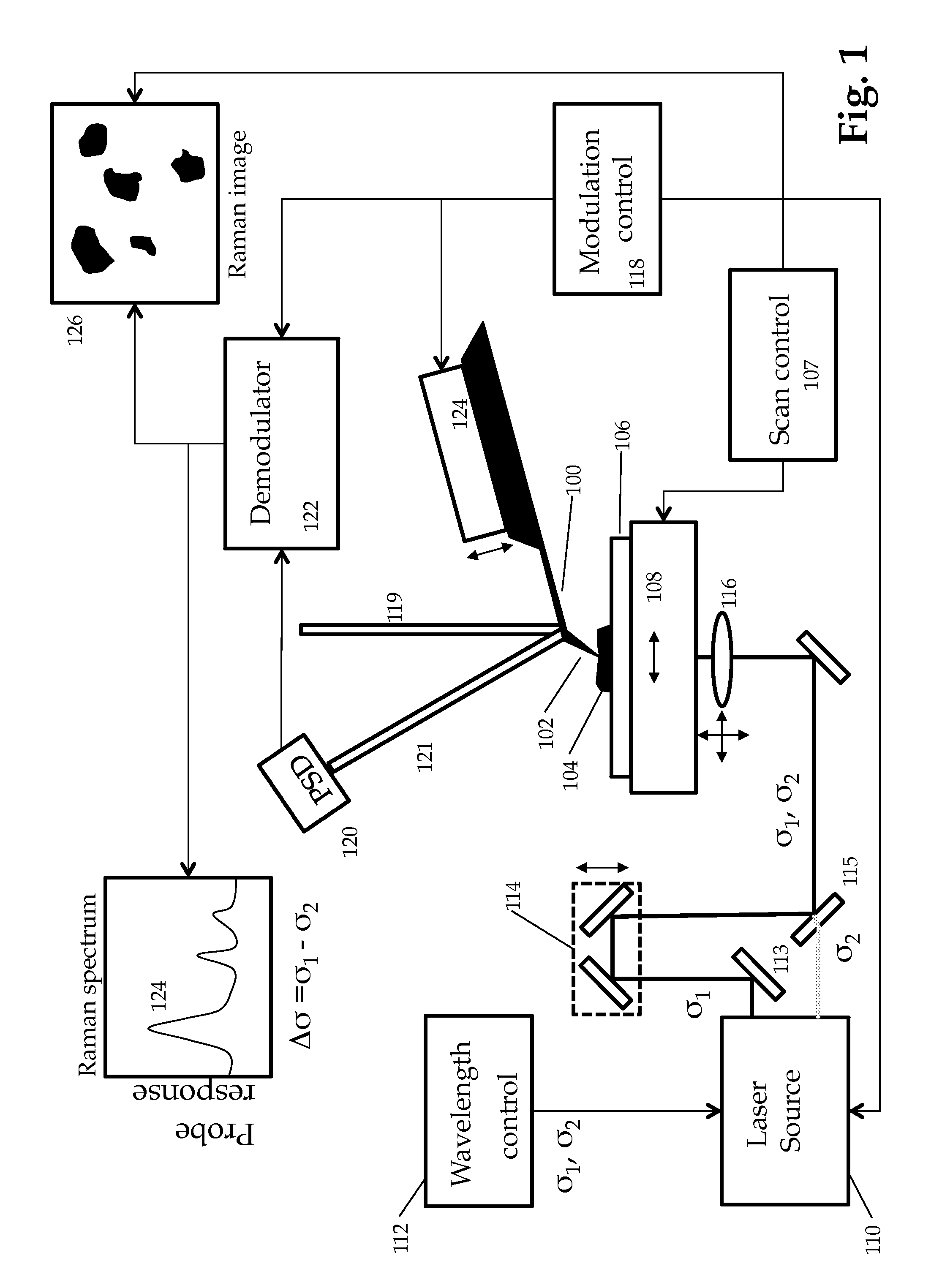Stimulated raman nanospectroscopy
a raman nano and raman spectroscopy technology, applied in the direction of spectrometry/spectrophotometry/monochromators, instruments, optical radiation measurement, etc., can solve the problems of high power lasers that can easily damage samples, weak raman effect, etc., and achieve high sensitivity and resolution. high
- Summary
- Abstract
- Description
- Claims
- Application Information
AI Technical Summary
Benefits of technology
Problems solved by technology
Method used
Image
Examples
Embodiment Construction
[0019]FIG. 1 shows a simplified schematic diagram of one embodiment of the current invention. An atomic force microscope cantilever probe 100 with a tip 102 is interacted with a sample 104, optionally on a support substrate 106. The tip may be interacted with the sample in contact mode, intermitted contact mode and / or non-contact mode. A probe modulator 124 can provide an oscillating signal to drive the cantilever into oscillator at one or more frequencies as supplied by modulation control 118. The modulation may include multiple modulation schemes described in copending application Multiple Modulation Heterodyne Force Microscopy U.S. Application Ser. No. 61 / 460,666 which is incorporated by reference. A laser source 110, or alternatively multiple sources, outputs at least two laser beams at frequencies σ1 and σ2.
[0020]In one embodiment the two beams at frequencies σ1 and σ2 are aligned to be substantially collinear using one or more beam steering devices shown schematically as mirro...
PUM
 Login to View More
Login to View More Abstract
Description
Claims
Application Information
 Login to View More
Login to View More - R&D
- Intellectual Property
- Life Sciences
- Materials
- Tech Scout
- Unparalleled Data Quality
- Higher Quality Content
- 60% Fewer Hallucinations
Browse by: Latest US Patents, China's latest patents, Technical Efficacy Thesaurus, Application Domain, Technology Topic, Popular Technical Reports.
© 2025 PatSnap. All rights reserved.Legal|Privacy policy|Modern Slavery Act Transparency Statement|Sitemap|About US| Contact US: help@patsnap.com



